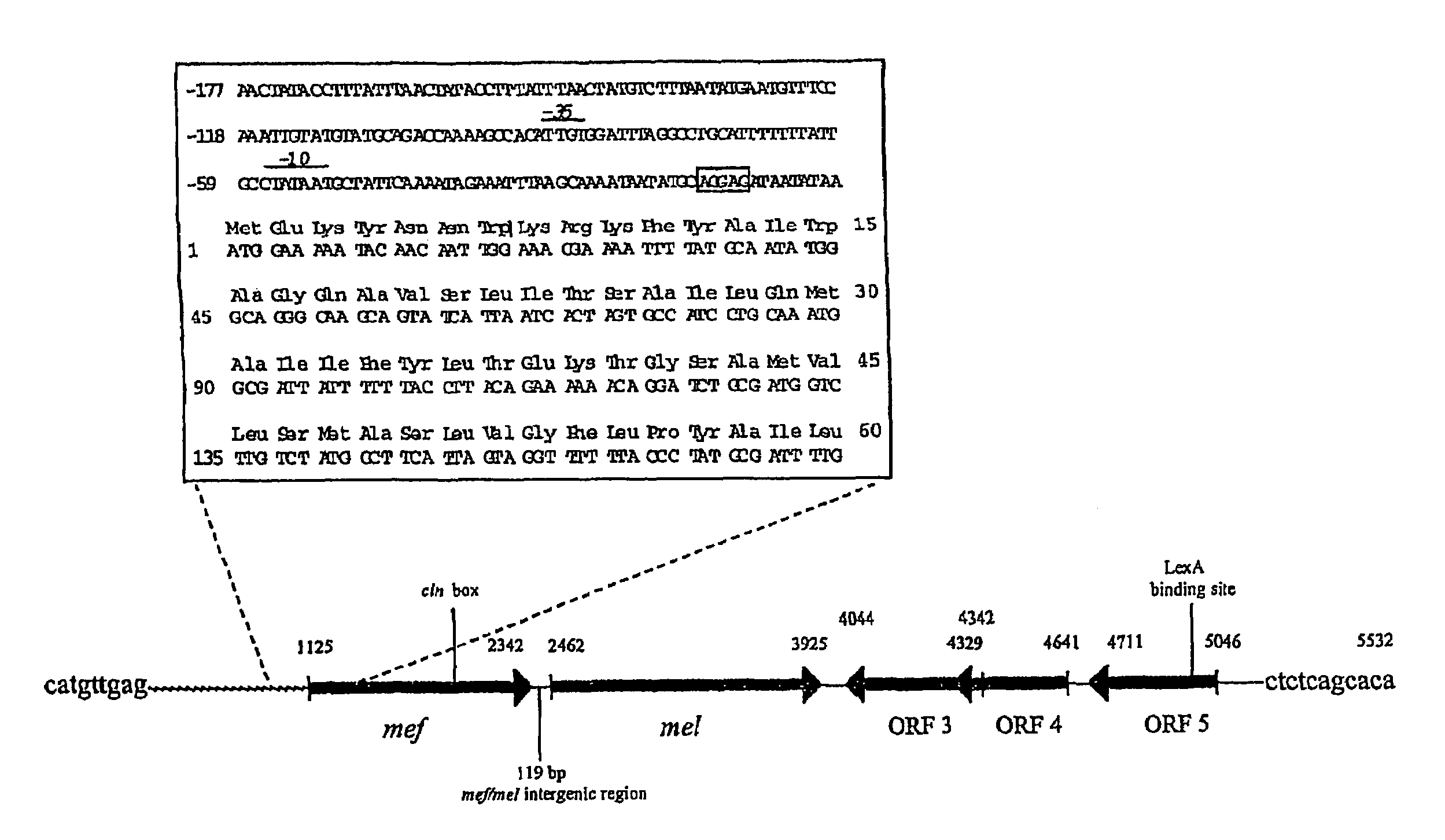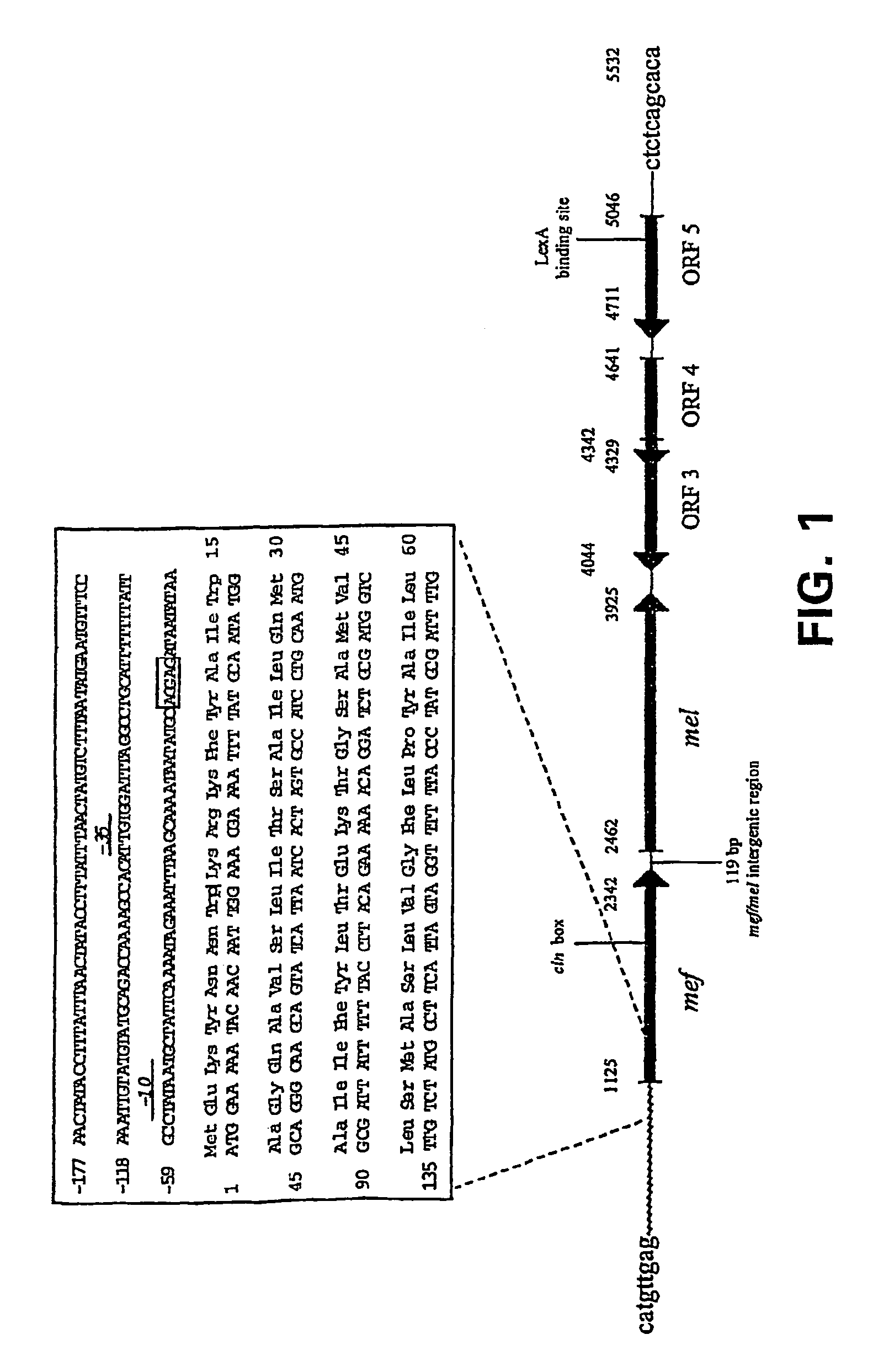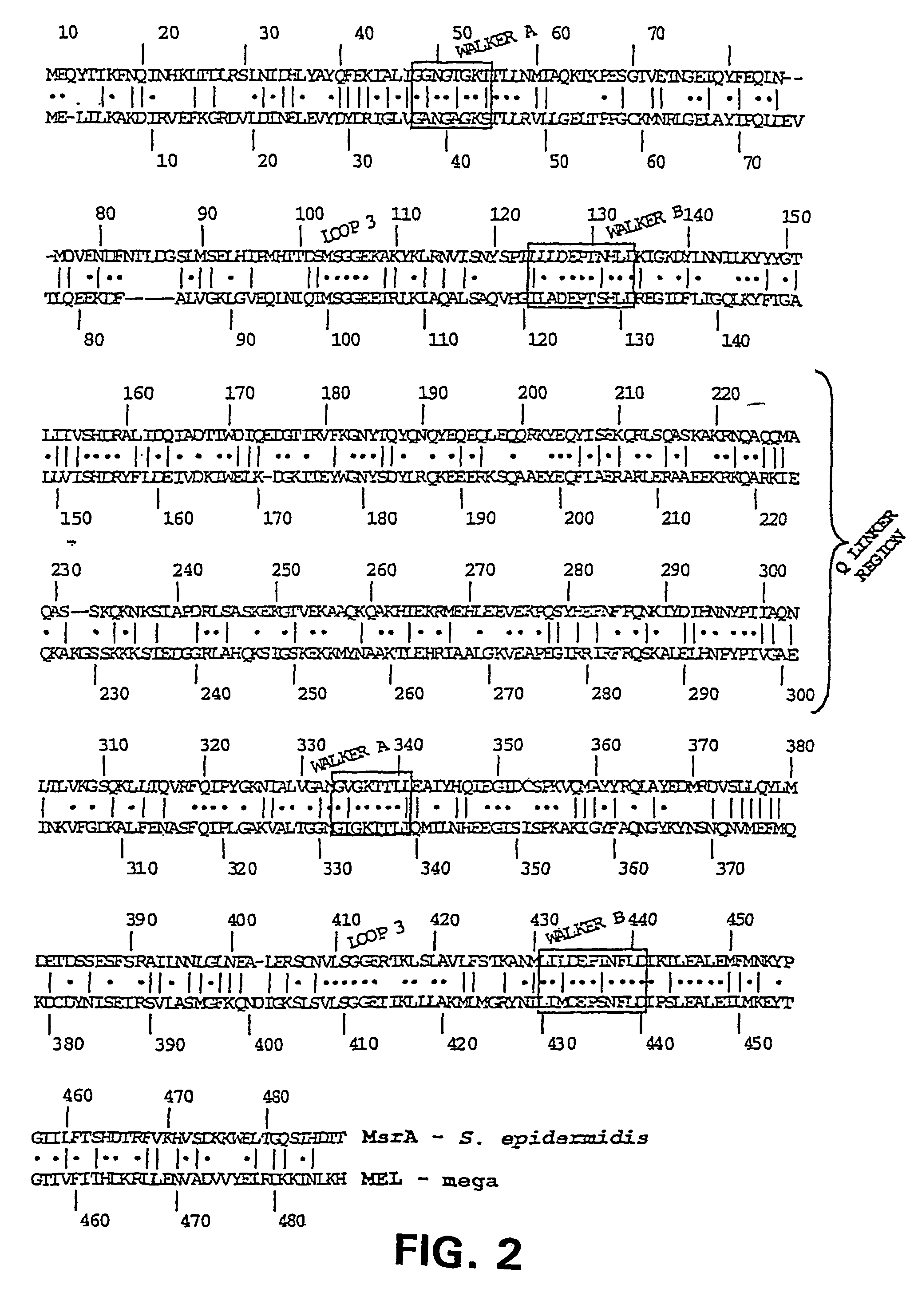Macrolide efflux genetic assembly
a technology of genetic assembly and mcrolide, applied in the field of molecular biology, can solve the problems of increasing the complexity of the treatment of infections due to i>s. pneumoniae /i>s. pneumoniae and other infections, and the impact of gram positive bacteria on the health of the population
- Summary
- Abstract
- Description
- Claims
- Application Information
AI Technical Summary
Benefits of technology
Problems solved by technology
Method used
Image
Examples
example 1
S. pneumoniae Isolates
[0123]Erythromycin-resistant isolates S. pneumoniae were obtained as a part of an active, population-based surveillance for invasive bacterial pathogens in metropolitan Atlanta. The specific collection methods have been previously described [20]. Briefly, all sterile-site isolates of S. pneumoniae (n=4148) were collected from the eight county metropolitan Atlanta area, Georgia Health District 3, (population 2.7 million: 1997 census) from 1994 to 1999. Laboratory audits were conducted to assess accuracy, and case report forms were generated on all cases. A subset of 336 erythromycin-resistant isolates (MIC=4 μg / ml), identified consecutively by the surveillance in 1994-1996 and in 1998, was studied for the presence of mefE and ermAM [13]. Eighty-nine mefE-containing isolates (MIC≧4 μg / ml) recovered from patients with invasive pneumococcal disease from January 1994 to February 1996 and the 129 mefE-containing isolates recovered in 1998 formed the collection of iso...
example 2
DNA Isolation
[0124]Genomic DNA was isolated from S. pneumoniae by one of two methods. Crude preparations of DNA were obtained by boiling bacterial pellets for ten minutes in 100 mM NaCl, 10 mM Tris-HCl (pH 8.3), 1 mM EDTA, and 1% Triton X-100. Higher purity DNA was prepared by sequential incubations of cell suspensions in lysozyme and RNase (Sigma, St. Louis, Mo.), phenol / chloroform purification and ethanol precipitation as described by Nath [22].
example 3
PCR-Based Detection of mefE
[0125]Nucleotide primers used in PCR and DNA sequencing are shown in Table 1. Primer set KG5F and KG5R2 was used to define 345 bp of mefE [12]. KG17R was also paired with KG5F to amplify mefE, resulting in a 1355 bp product. PCR amplification consisted of 35 cycles with a 30 second denaturation at 95° C., a 30 second anneal at 60° C., and extension for 1 minute at 72° C. in a GeneAmp PCR System 9600 thermal cycler (Perlin-Elmer Applied Biosystems, Foster City, Calif.). Each reaction contained 500 ng of template DNA, 50 mM KCl, 10 mM Tris-HCl (pH 8.3), 200 μM each of deoxyribonucleoside triphosphate, 2.5 U Taq DNA polymerase (Perkin-Elmer Applied Biosystems, Foster City, Calif.), 1.5 mM MgCl2 and 1.5 μM of each primer. PCR products were visualized by 1.2% agarose gel electrophoresis and ethidium bromide staining.
PUM
| Property | Measurement | Unit |
|---|---|---|
| temperatures | aaaaa | aaaaa |
| temperature | aaaaa | aaaaa |
| temperature | aaaaa | aaaaa |
Abstract
Description
Claims
Application Information
 Login to View More
Login to View More - R&D
- Intellectual Property
- Life Sciences
- Materials
- Tech Scout
- Unparalleled Data Quality
- Higher Quality Content
- 60% Fewer Hallucinations
Browse by: Latest US Patents, China's latest patents, Technical Efficacy Thesaurus, Application Domain, Technology Topic, Popular Technical Reports.
© 2025 PatSnap. All rights reserved.Legal|Privacy policy|Modern Slavery Act Transparency Statement|Sitemap|About US| Contact US: help@patsnap.com



